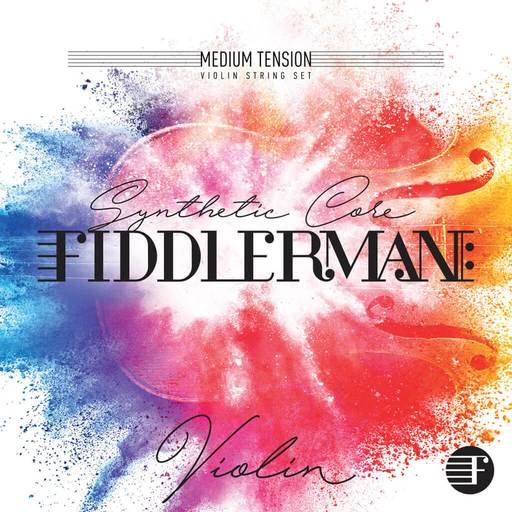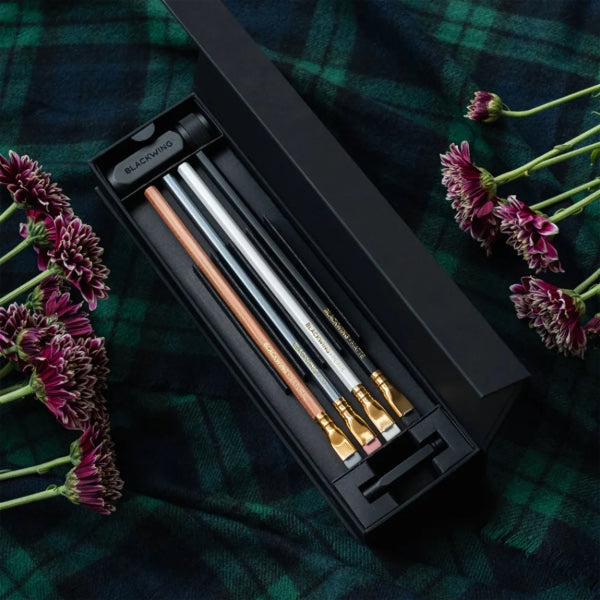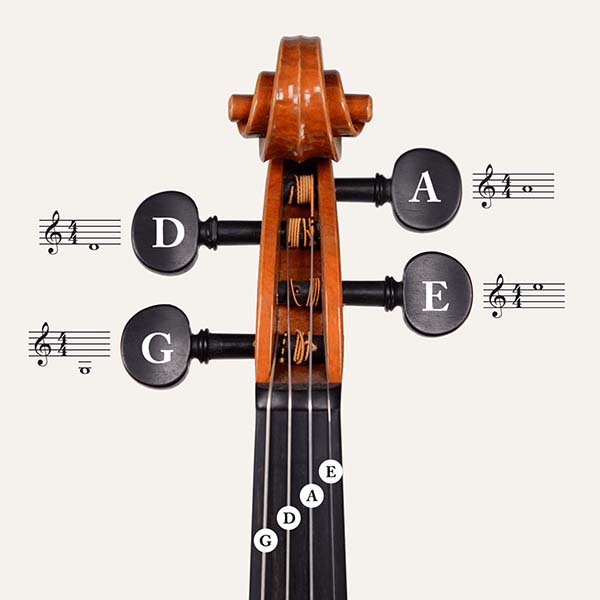String Theory:
A Simple Breakdown and Guide to Violin Strings

Strings are part of the big picture that all come together to shape the sound and response of the violin.
Types of Strings
Gut Core Strings
The most expensive and regarded as the finest of strings, professionals who don't mind a premium price generally use the gut core strings. They have an extended break in period (one to two weeks) and short playtime (one month of regular playing) for the value of its superior projection, dynamics, and tonal complexity.

Steel Core Strings
Aimed traditionally at beginners or country and electric violin players that want a compressed or louder volume output. Steel core come in at the most affordable on this list.

Notable features are a bright and louder tone. Steel core strings also have a short break in period (1-2 days) and a long lifespan of around three to six months -- or more. The major drawback is they go out of tune directly with any pronounced bow pressure and lack dynamic control.

Synthetic Core Strings
Lead industry standard for many players, including professionals. Synthetic core strings have had interesting and positive advancements over the past 10 years. All the top makers of synthetic core strings have done extensive r&d, attempting to match all the best attributes of gut strings, without the two major drawbacks: a long break in period and the short lifespan. By golly, they’ve done it! Some discerning players would argue otherwise, but for the rest of us, there are a myriad of options.

Pairing Strings with A Violin
The next important step in the sound of the violin is not only utilizing a good quality string set, but also finding the best matching set for your particular violin and tone preference. Along with projection (loudness, dynamic range), the other popular variable that can be altered with string changes is the tone of a violin falling within a bright or dark end of the tone spectrum.

Violin too dark? Research what model of string set set you have and its tonal qualities. If the current set is neutral then try a brighter set and if it happens to be a dark set, try a good quality neutral set. The same process can be used for a violin that is too bright. Remember that the sound post can be adjusted for tone.
The thicker strings are called Stark, Forte, Heavy tension. The thicker strings require more tension to reach the correct pitch and therefor produce more tension, pressure resulting in more power. By the same token, the extra tension reduces action time and responsiveness.
The thinner strings are called weich, soft, light, or dolce tension. Because they are thinner they need less tension to reach their pitch producing less tension, pressure and resulting often in less power. However they usually will have quicker action and reponsiveness. and even brightness. If just one or two of your strings are too bright or weak sounding, you may want to try a thicker string. If one or two of your strings are too dark sounding or non-responsive and slow, you may want to try a thinner string.
Usually you get a set of strings with the same tension but at times it may be necessary to mix the strings to get a well balanced dynamic from bottom to top.
Our current recommendation for uncompromising tone and durability are Kaplan Strings, From DAddario. Avaiable in two models: bright (Vivo) and warm (Amo)
Fiddlershop Recommended String Picks
Here is a curated list of strings that have great complexity.
Tone
Bright: Kaplan Vivo, Evah Pirazzi Gold
Warm: Kaplan Amo, Obligato (Pirastro), Larsen Virtuoso
Balanced: Fiddlerman Strings, Vision Solo
Projection and Dynamics
Quiet: Eudoxa (Pirastro)
Powerful: Vision Titanium Solo, Evah Pirazzi (Pirastro)
Balanced: Fiddlerman Strings, Tzigane (Larsen), Passione (Pirastro), Vision Solo
Keep It Clean

The environment you create for the string impacts longevity. Clean and dry hands will benefit the strings a great deal, since the salt and acidity from sweaty ol’ fingers degrades strings quickly. In addition, wiping the strings with a dry cloth or slightly damp cloth with alcohol to remove any build up. Here in Florida, a quality synthetic core string set used daily can last 2-3 months, whereas the same set used in New York can last 4-6 months.

String Tension
The thicker strings are called Stark, Forte, Heavy tension. The thicker strings require more tension to reach the correct pitch and therefor produce more tension, pressure resulting in more power. By the same token, the extra tension reduces action time and responsiveness.
The thinner strings are called weich, soft, light, or dolce tension. Because they are thinner they need less tension to reach their pitch producing less tension, pressure and resulting often in less power. However they usually will have quicker action and reponsiveness. and even brightness.
If just one or two of your strings are too bright or weak sounding, you may want to try a thicker string. If one or two of your strings are too dark sounding or non-responsive and slow, you may want to try a thinner string.
Usually you get a set of strings with the same tension but at times it may be necessary to mix the strings to get a well balanced dynamic from bottom to top. Stick with Mediums unless you have a particular need for a stronger string. If there is a curious lack or excess of projection from the violin it's certainly an option to experiment with higher or lower string tensions. There are other factors, however. The sound post and fingerboard angle both factor into projection of the instrument as well.
The thicker strings are called Stark, Forte, Heavy tension. The thicker strings require more tension to reach the correct pitch and therefor produce more tension, pressure resulting in more power. By the same token, the extra tension reduces action time and responsiveness.
The thinner strings are called weich, soft, light, or dolce tension. Because they are thinner they need less tension to reach their pitch producing less tension, pressure and resulting often in less power. However they usually will have quicker action and reponsiveness. and even brightness.
If just one or two of your strings are too bright or weak sounding, you may want to try a thicker string. If one or two of your strings are too dark sounding or non-responsive and slow, you may want to try a thinner string.
Usually you get a set of strings with the same tension but at times it may be necessary to mix the strings to get a well balanced dynamic from bottom to top.








2 comments
Fiddlershop
Hi Alan!
Here are the notes for 6 strings: E, A, D, G, C, F.
For violins we sell a product called First Frets Violin Fingerboard Sticker. They don’t stick out, it’s just a visual aid for learning purposes.
The Tower Acoustic Electric Violin is a great option, but it only has 4 strings.
Have a great day!!
Hi Alan!
Here are the notes for 6 strings: E, A, D, G, C, F.
For violins we sell a product called First Frets Violin Fingerboard Sticker. They don’t stick out, it’s just a visual aid for learning purposes.
The Tower Acoustic Electric Violin is a great option, but it only has 4 strings.
Have a great day!!
Alan Gantz
I anticipate purchasing my first violin soon and I was wondering what notes six string violins are tuned to. Also I have played guitar previously and wondered about frets or no frets. Right now I really like the Tower acoustic/electric package you have for sale. The idea of being able to play classical as well as experiment with effects and amplification.
Thanks
Alan
I anticipate purchasing my first violin soon and I was wondering what notes six string violins are tuned to. Also I have played guitar previously and wondered about frets or no frets. Right now I really like the Tower acoustic/electric package you have for sale. The idea of being able to play classical as well as experiment with effects and amplification.
Thanks
Alan